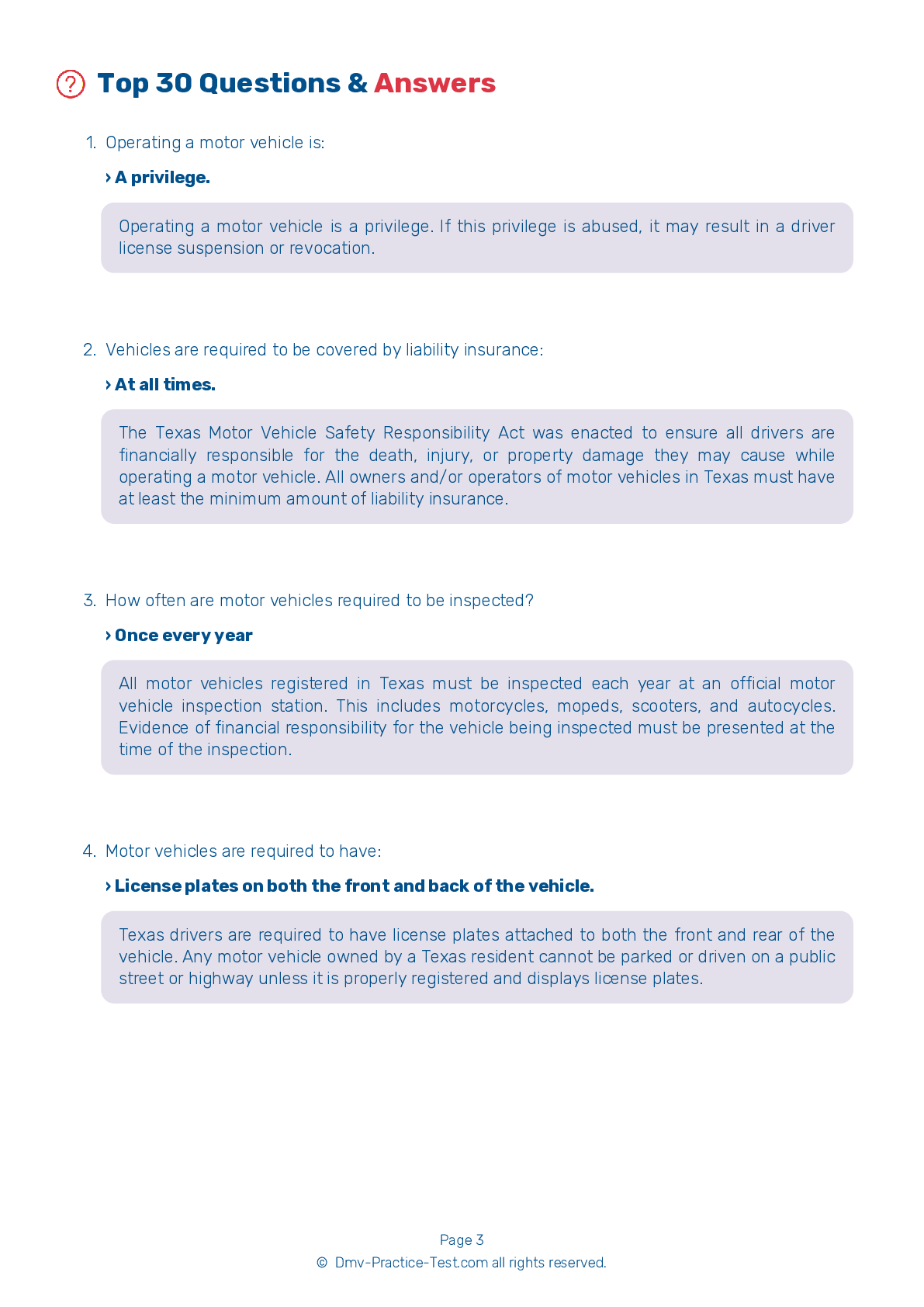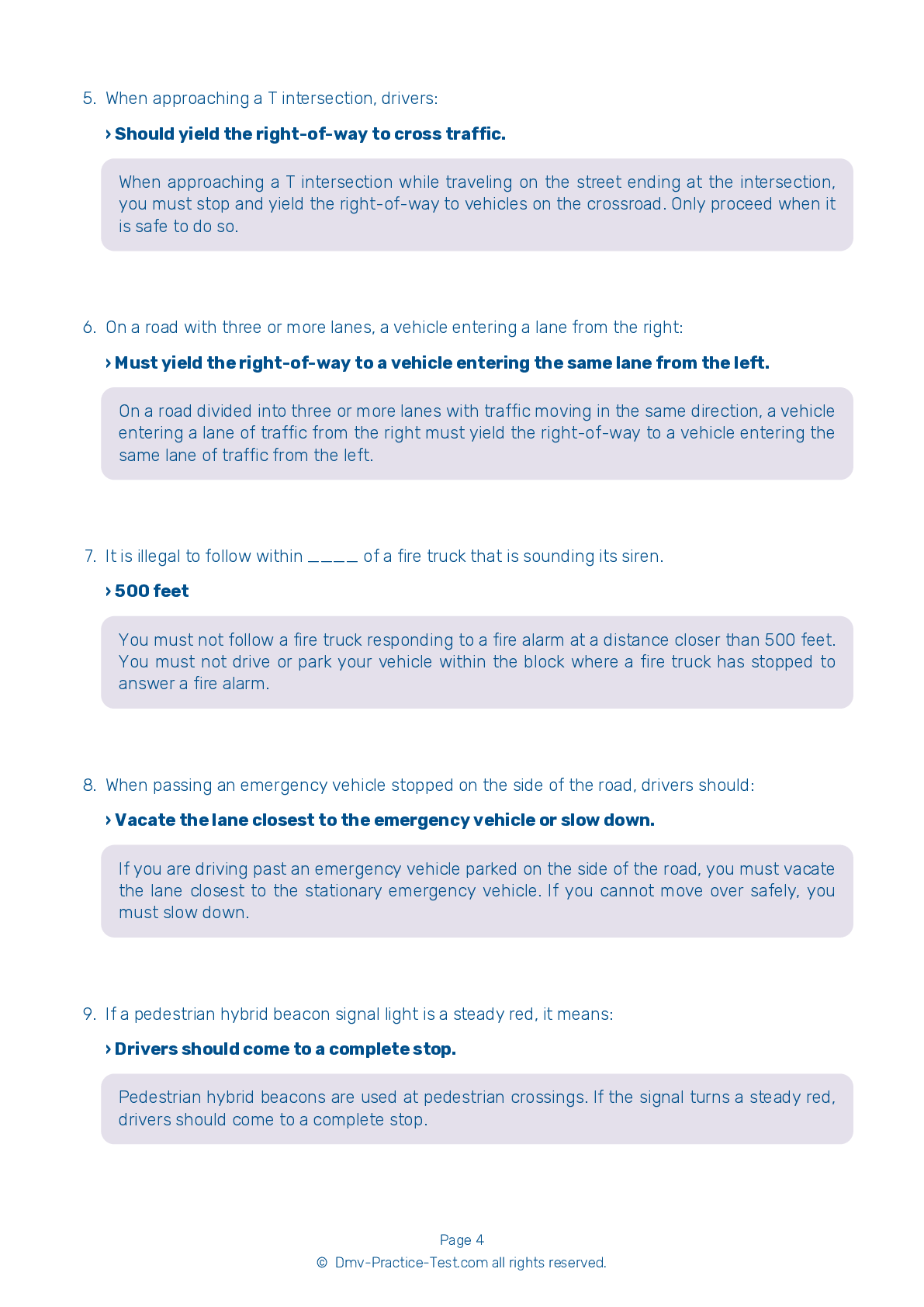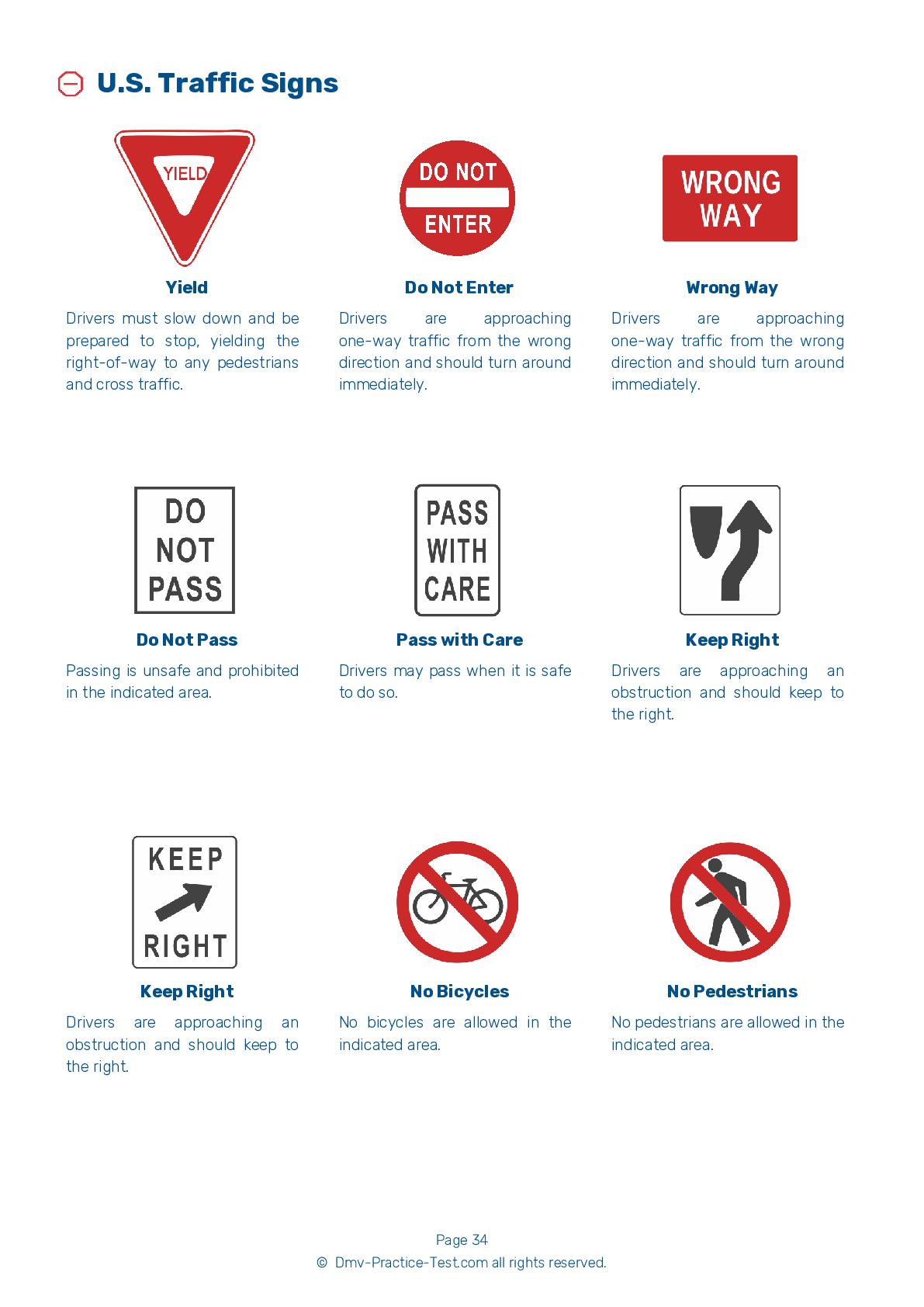FREE Texas DMV Practice Test #21 Page 4 of 5
For January 2025, the Texas DMV practise exams have been revised. It comprises questions based on the most important traffic signals and laws for 2025 from the Texas Driver Handbook. To study for the DMV driving permit test and driver's licence exam, use actual questions that are very similar (often identical!) to the DMV driving permit test and driver's licence exam.
Each question on the practise exam has a tip and explanation to help you recall the ideas. Questions about traffic rules, traffic signs, and driving statutes, as well as knowledge from the Driver Handbook, will be included in the written portion of the official Texas DMV test.
You must properly answer 21 of the 30 questions to receive a passing mark. Use the Texas Department of Motor Vehicles' practise exam to help you prepare for your instruction permit or driver's licence.
The DMV exam is offered in a variety of languages.
Using any form of testing help will result in an automatic fail, and the DMV may take further action against your driver's licence, so avoid it.
19 . To properly use a roundabout, drivers should:
A roundabout is a circular intersection that flows in a counterclockwise direction around a central island and usually does not include a traffic signal. Motorists must enter from the right, yielding to traffic already in the roundabout, and follow the circle to the right until the desired roadway is reached.
20 . This road sign means:
.png)
This sign marks parking spaces that are reserved for people with disabled parking permits.
21 . What might a flag on the back of a bicycle indicate?
Slow down when driving near a bicyclist with a flag on the back of their bicycle because the flag may indicate that the bicycle operator is hearing impaired. Use caution when driving near bicycles.
22 . When driving at speeds under 30 mph, keep a minimum following distance of:
The more distance between your vehicle and others, the more time you will have to react if another driver makes a mistake. Keep a minimum following distance of two seconds when driving slower than 30 mph, under normal conditions.
23 . When is it legal to have an open container of alcohol in a motor vehicle passenger area?
It is illegal to possess an open container of alcohol in a motor vehicle passenger area located on a public highway, regardless of whether the vehicle is stopped, parked, or being operated. Conviction of this offense is punishable by a fine not to exceed $500.
24 . To be safe when crossing a railroad, you should:
Railroad crossings are always dangerous. Drivers should look and listen for an approaching train coming from either direction before proceeding across the tracks. Watch for signals indicating an approaching train and never proceed until you are certain it is safe to do so.
Need Car Insurance? No problem!
Compare the best rates in Texas and find a personalized policy that meets your needs.
1. Are You Currently insured ?
2. Married ?
3. Do you own your Home?
4. Do you have more than 1 car ?
5. Have you or a Family Member Honorably Served in U.S. Military ?
6. Your Name
7. Age
8. Zip code
IMPORTANT REMINDER:Auto Insurance is Mandatory to drive in Texas. Get covered before you hit the road to avoid any fines.
Ranked by best match



